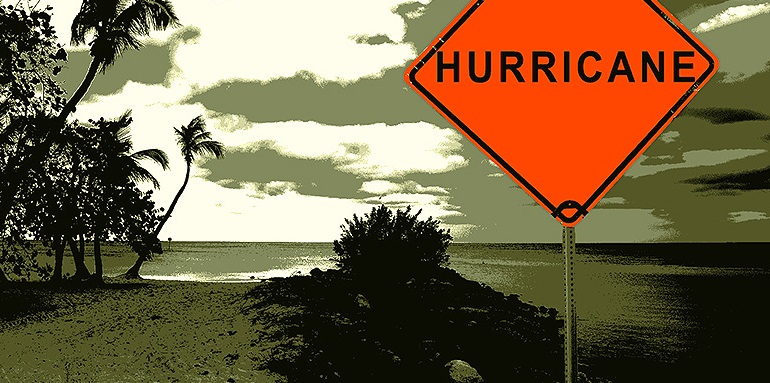Reinsuring Catastrophes

The hurricane season in the Atlantic and other natural disasters serve as a sobering reminder of the devastation that can be wrought by severe weather events. The humanitarian and socio-economic impact can last from months to years.
To put this year’s damage into perspective, Hurricanes Harvey, Irma and Maria are estimated to have caused over $60 billion of insured losses. This will make 2017 one of the most costly hurricane seasons of all time and the most significant since 2005. When these infrequent, but significant weather events occur, a well-capitalised insurance and reinsurance industry plays a crucial role as a financial safety net to help communities recover.
Reinsurance helps insurance companies protect earnings, reduce volatility and allows them to continue to provide protection.
The reinsurance market facilitates risk transfer and risk mitigation for insurers and serves as an important piece of the insurance supply chain. The risk transfer role that reinsurance plays helps insurance companies protect earnings, reduce volatility and, most importantly, allows them to continue to provide protection and cover any claims to consumers.
The reinsurance market has traditionally been dominated by large, publicly traded and rated reinsurers. Over the years, the market has developed “alternative” investment vehicles for institutional investors looking to access reinsurance strategies. Today, these alternative investment vehicles amount to just under $90 billion in assets under management (AUM) and provide exposure to catastrophe bonds (“cat bonds”), quota-shares and other collateralised reinsurance instruments delivering a range of risk/return profiles.
A common characteristic across these different instruments is their fully collateralised nature – unlike the rated reinsurers that typically have levered balance sheets, collateralised reinsurance instruments do not generally employ leverage and so they play a critical role in the insurance market by providing guaranteed protection to consumers should a major weather event result in catastrophic loss. In return, investors are rewarded for putting their capital at risk by earning premiums that can range from single digits to double digits per annum.
Benefits and risks
From a broader perspective, the on-going opportunity to sell reinsurance lies in the expectation of positive return over a cycle: the price of the insurance more than compensates for the risk of a catastrophic event. Furthermore these strategies provide a source of return that is not driven by traditional market factors. In a low yielding world, the uncorrelated nature of the strategy combined with the spread over risk-free assets for certain insurance-linked instruments can look attractive in a diversified portfolio.
In a low yielding world, the uncorrelated nature of the strategy and spread over risk-free can look attractive.
The 2017 hurricane season has led to an erosion of capital and historically, such events have represented a good entry point for investors due to the increase in premiums and attractive underwriting opportunities in the following year. For example in the collateralised retrocession space, it has been estimated that c$9 billion of the $30 billion in AUM has been either impaired or trapped as result of the recent hurricane activity in the Atlantic.
The insurance pricing cycle does go through peaks and troughs, depending on the demand for the insurance relative to the capital supplied. As such, premiums can deteriorate quickly in a softer part of the market cycle, a phenomenon which may suggest that investors could consider taking a more tactical approach towards the asset class.
In addition, higher-risk strategies in the space can experience large drawdowns when a natural disaster occurs. In particular, most portfolios cannot escape from having significant exposure to US Florida windstorm risk given the high levels of insured property in the region.
Finally, predicting the weather and pricing weather risk is somewhat of an inexact science particularly over an intermediate 6-12 month window. Investors have to proceed for now on the assumption that weather events are independent from year to year and adjust their exposure according to pricing changes.
Rebuilding communities
This raises questions about climate change and its impact on reinsurance risk and the cost of natural disasters. We do not yet have a full or conclusive picture of the impact of climate change, and specifically global warming, on hurricane activity. Since Hurricane Katrina in 2005, the reinsurance industry has refined their techniques for estimating the probability of severe hurricane activity, with industry loss models being adjusted for higher probabilities post-2005. Modelling adjustments continue to be made over time to reflect advancement in research and science relating to weather activity.
Ultimately, following the impact of the most recent natural disasters, governments and citizens are focused on recovering from the aftermath of the catastrophes and rebuilding their communities. As new infrastructure and property arise from the debris left behind by the storms, there remains a clear need for catastrophe insurance given the role it plays in helping local communities recover from the aftermath of such events.
Institutional investors have and will continue to be important participants in the evolving reinsurance landscape.
Jennifer Lau
Senior Analyst – Alternatives

